Art Fairs
See the Top 10 Booths at ARCO Madrid 2016
The fair is celebrating its 35th anniversary in style.
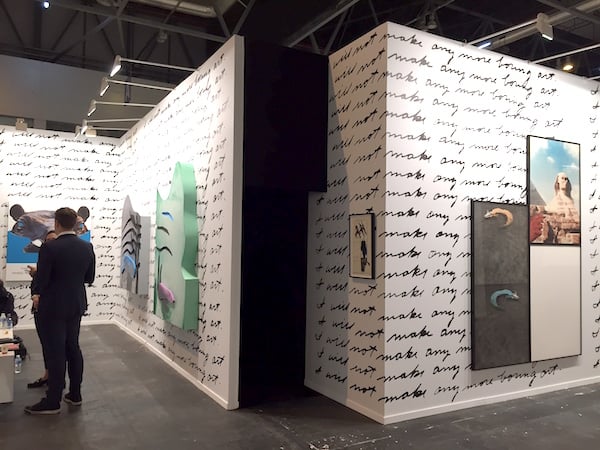
Photo: Lorena Muñoz-Alonso.
The fair is celebrating its 35th anniversary in style.

Lorena Muñoz-Alonso

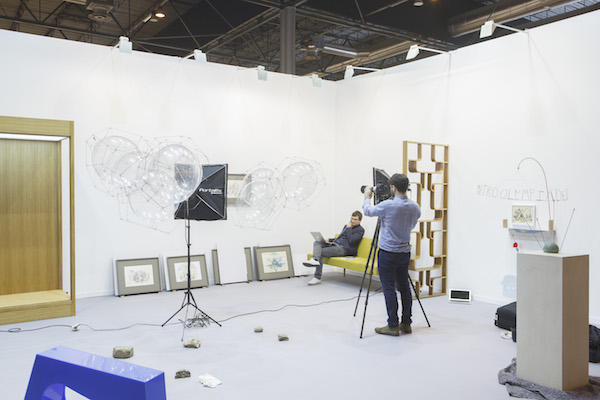
Exhibitors preparing for the preview at ARCO Madrid 2016.
Photo: Courtesy ARCO Madrid.
The sight of people downing their champagne flutes with gusto at 11am, shortly after the VIP breakfast had begun, aptly captured the mood at yesterday’s preview of ARCO Madrid. After all, the art fair is celebrating its 35th anniversary this year, and it’s doing it in style.
Besides the ubiquitous presence of champers in the aisles, the most significant element of such a momentous celebration is the fair’s anniversary section, with the rather biennale-esque title of “Imagining other futures.” Curated by María and Lorena del Corral, Catalina Lozano, and Aaron Moulton, the section features 35 heavy-hitting galleries that have, at some point or another over the last three and a half decades, participated in the fair.
The roster includes power houses such as Marian Goodman Gallery, Sprüth Magers, Lisson Gallery, Galerie Lelong, Esther Schipper, Alexander & Bonin, Team Gallery, and Victoria Miro Gallery—most of which haven’t participated in the fair’s recent iterations. The projects presented are also ambitious, featuring dialogues staged between the work of two gallery artists, some of them responding to each other’s works, others markedly intergenerational, and all of them exhibiting great quality and curatorial panache.
The fair thereby gains a decidedly more international and blue-chip feel this year. And even if the reportedly benign conditions that these illustrious galleries have received in order to secure their participation have, as rumor has it, ruffled the feathers of some national exhibitors who haven’t benefited from the same incentives, it is safe to say that everyone wins with this birthday facelift, considering the sophistication and excitement that it has brought to ARCO.
Despite the progressive scaling-down that has been implemented in recent years, ARCO still is—much to the chagrin of many who think a more selective approach would be best—a rather massive fair. This year, over 224 galleries from 29 countries have gathered under the roof of the IFEMA trade convention center. In case you are in town for the fair—and ARCO week is a great time to be in Madrid, with numerous top-notch exhibitions in museums and galleries taking place across the city—we have selected the ten booths you really can’t afford to miss.
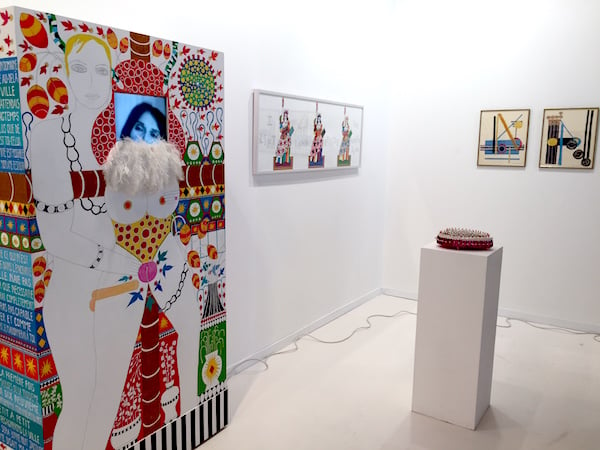
Installation view of the booth of Air de Paris at ARCO Madrid 2016.
Photo: Lorena Muñoz-Alonso.
1. Air de Paris, Paris
The dialogue between the erotic mysticism of Dorothy Iannone and the crafty excess of her mother, Sarah Pucci, is an absolute winner. Air de Paris presented a stand that was sexy, poignant, vibrant, historical, and hysterical all at once. Iannone’s explicit, high-voltage paintings are well-known and loved by many, but that her mother had also made work, in the shape of sequinned, heart-shaped soft sculptures, was an absolute discovery. The Paris-based gallery also brought a pair of stunning early collages by the artist—pre-sexual awakening—as well as a couple of vintage photos of the artist taken by her then-partner Dieter Roth, in the company of the daughter of Fluxus legend Robert Filliou. Phenomenal.

Installation view of the booth of Marian Goodman at ARCO Madrid 2016.
Photo: Lorena Muñoz-Alonso.
2. Marian Goodman Gallery, New York, Paris, London
Marian Goodman staged a dialogue between outward Californian conceptualist John Baldessari and introverted situation manufacturer Tino Sehgal. On the walls, a number of historical works from Baldessari, starting from the 1960s, enclosed a room in which Sehgal’s Kiss (Clean Version) (2002) unfolded quietly. Visitors entering the room had to wait a good five minutes before their eyes made the transition between furious neon art fair lighting to pitch-dark. Once that happened, the outlines of two naked performers emerged from the darkness, engaging in a series of reenactments of famous kisses from the art history canon, including those imagined by Gustav Klimt, Auguste Rodin, and Constantin Brancusi. Who knew art fairs could make you go all gooey.
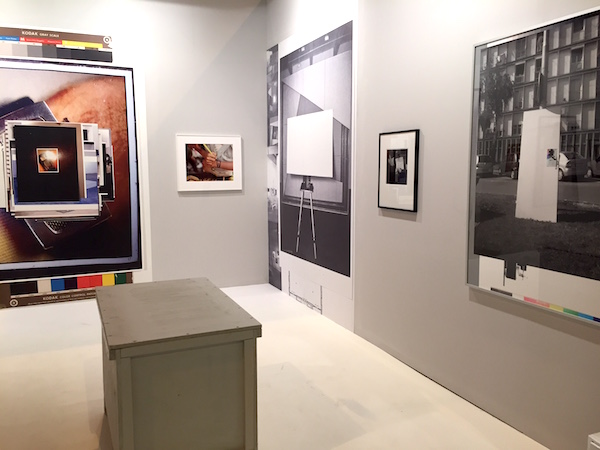
Installation view of the booth of Annet Gelink at ARCO Madrid 2016.
Photo: Lorena Muñoz-Alonso.
3. Annet Gelink Gallery, Amsterdam
In this stand, the artist David Maljkovic has curated a display in which he has intertwined his own work with the stunning black and white photographs of Ed van der Elsken. Maljkovic, whose films, collages, and installations revisit and challenge modernist utopias and projects, has selected a number of images by van der Elsken, a keen observer of individuals, as if summoning them to inhabit his images of inorganic debris. The result is certainly pared-down and introspective, but sometimes close attention is highly rewarding, especially amid the frantic pace of an art fair.

Installation view of the booth of Kurimanzutto at ARCO Madrid 2016.
Photo: Lorena Muñoz-Alonso.
4. Kurimanzutto, Mexico City
At the stand of the Mexican gallery, two Gabriels—Kuri and Sierra—staged a face-off, although their shared use of everyday materials and their penchant for humorous twists made their collaboration more a duet than a duel. Sierra’s Por qué el 2016 se parece tanto al 2015 (why 2016 looks so similar to 2015) used small canvases of brown linen to create a series of geometrical wall-sculptures. Meanwhile, Kuri’s Matching Punch Cards (2016), employing his signature display materials and out-of-scale matchsticks, continues his exploration of consumerism, sampling, and the poetics of the everyday.
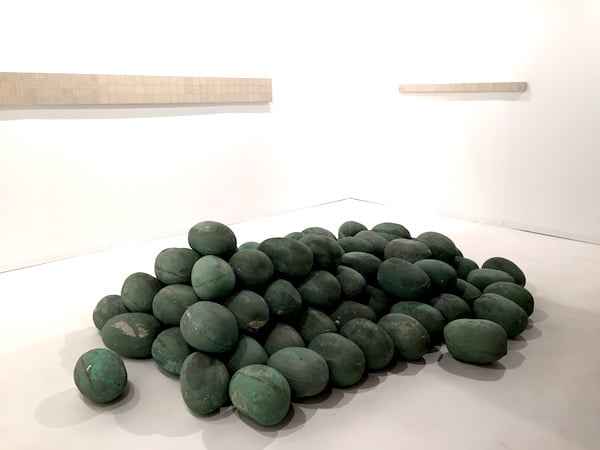
Installation view of the booth of Galeria Fortes Vilaça at ARCO Madrid 2016.
Photo: Lorena Muñoz-Alonso.
5. Galeria Fortes Vilaça, São Paulo
Nearby, at the São Paulo powerhouse Galeria Fortes Vilaça, the Brazilian artists Erika Verzutti and Jac Leirner presented a beautiful dialogue pitting their styles against each other. Verzutti’s highly organic, sensual, and gestural sculptures contrasted with Leirner’s minimal works which repurpose everyday items (in this particular case, newspaper clippings of sudoku games) in complex serial compositions.
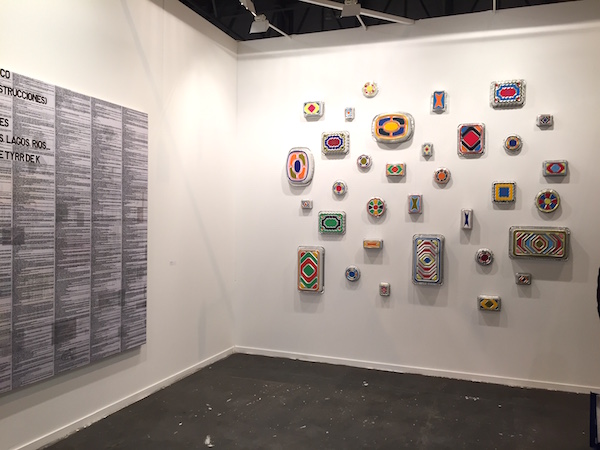
Installation view of the booth of MaisterraValbuena at ARCO Madrid 2016.
Photo: Lorena Muñoz-Alonso.
6. MaisterraValbuena, Madrid
The Madrid-based gallery presented a generous booth gathering a selection of many of its represented artists, including Néstor Sanmiguel Diest, Maria Loboda, B-Wurtz, Regina de Miguel, and Maria Luisa Fernández, an interesting basque sculptor that has just signed with the gallery. To the left of the booth, B-Wurtz’s recent Pan Painting (2015), comprising a hilarious composition of painted aluminium food containers, stole the show.
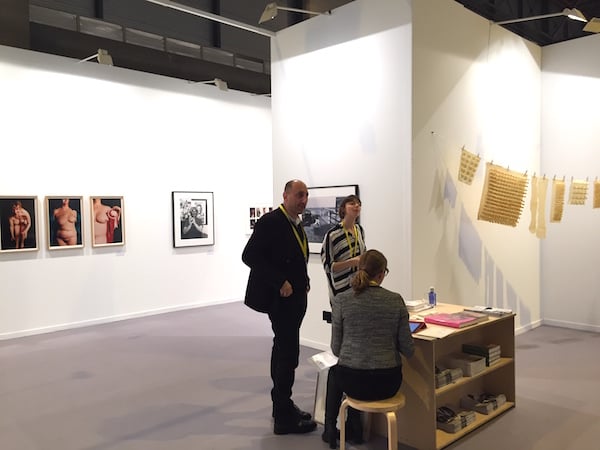
Installation view of the booth of Richard Saltoun Gallery at ARCO Madrid 2016.
Photo: Lorena Muñoz-Alonso.
7. Richard Saltoun Gallery, London.
The London-based gallery presented a booth dedicated to the two leading feminist artists Renate Bertlmann and Jo Spence (whose work is currently the subject of a solo exhibition at the gallery). The female body and its sexuality is a shared interest in both oeuvres, but so is its fragility and the conflation of sex and death. Bertlmann’s Washing Day (1976-77), depicting hung body parts made in latex, points both to the commodification and the decay of the human body. Meanwhile, Spence’s Narratives of Disease (1990), completed shorty before her passing away from cancer, is an unflinching look at the power of creativity and optimism in the face of death. Superb.
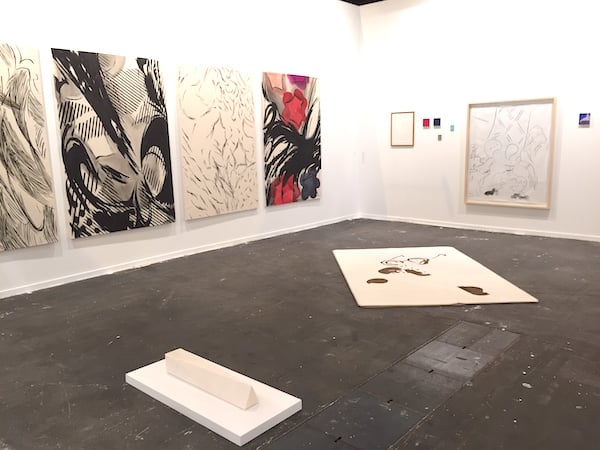
Installation view of the booth of Antoine Levi at ARCO Madrid 2016.
Photo: Lorena Muñoz-Alonso.
8. Antoine Levi, Paris
This year, the young Paris-based Antoine Levi has been bumped-up from the emerging section Opening, where he participated in 2015, to the main section. The much larger size of the booth allowed him to showcase works by four of his artists, Francesco Gennari, Piotr Makowski, Ola Vasiljeva, and Zoe Williams. Gennari’s beautiful marble floor sculpture Autoritratto tra un quadrato e un triangulo complemented Vasiljeva’s delicate lithographs on carpet. On the walls, the series of gestural ink-on-canvas paintings by Makowski were a great counterpoint to Williams’s humorous small canvases and photo etchings on papers.

Installation view of the booth of Kewenig Galerie at ARCO Madrid 2016.
Photo: Lorena Muñoz-Alonso.
9. Kewenig Galerie, Berlin
Berlin’s Kewenig went big, crafting a veritable tribute to a group of legendary sculptors of the 20th century, including Mario Merz, Christian Boltanski, Jannis Kounellis, and Pedro Cabrita Reis. There was something refreshingly museum-like about this booth, with its selection of large and ambitious pieces, including a whole room devoted to Boltanski’s sinister puppet show Théatre d’ombre (1989). But the winner was Merz’s Coccodrillo Perfetto (1995), a late sculptural work featuring beautiful chalk drawings on Belgian granite. Nearby, a TV set on the floor screened a documentary explaining Merz’s working process. Priceless.
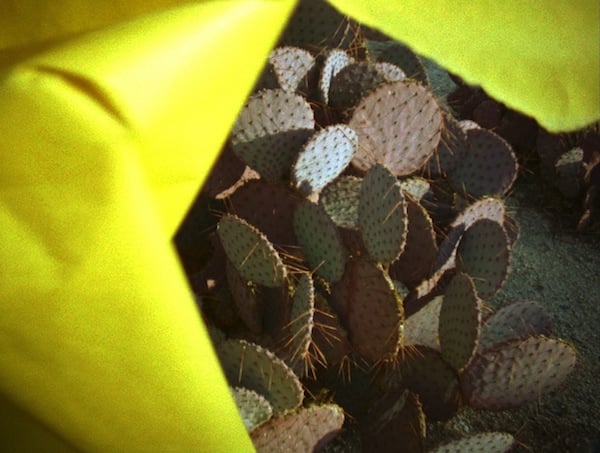
Film still of Laida Lertxundi’s Live to Live (2016) at the booth of Marta Cervera at ARCO Madrid 2016.
Photo: Courtesy the gallery.
10. Galeria Marta Cervera, Madrid
In the main section, the Madrid-based gallery, which is gaining quite a strong reputation for scooping the best emerging national talent (including the artists Leonor Serrano Rivas and Nuria Fuster), also staged a two-person presentation with works by the filmmaker Laida Lertxundi and the painter David Reed. Reed’s long, strip-like paintings were beguiling, but the work of the Spanish born, Los Angeles-based Lertxundi stood out. Her film Live to Live (2016), which will soon be screened at the forthcoming edition of “Made in L.A.,” produced in her signature 16mm style, featured hazy Californian landscapes and a highly convoluted process-based soundtrack. To craft the sound of the film, the waves of an electrocardiogram of the artist and an orgasm were translated to drones by Tashi Wada (the son of Fluxus artist Yoshi Wada) and Ezra Buchla, (the son of the inventor of the legendary Buchla synth). Collaboration doesn’t get any cooler than that.